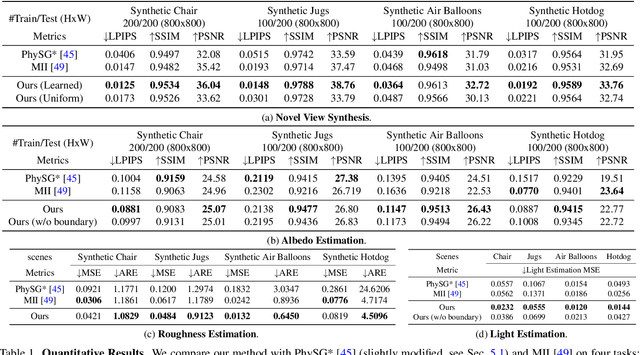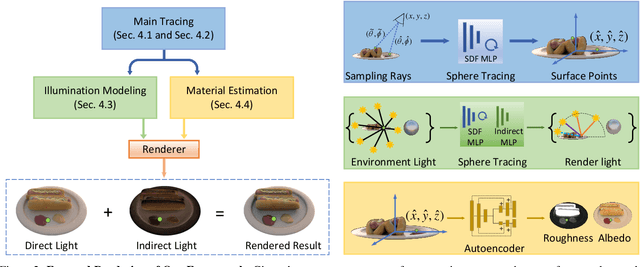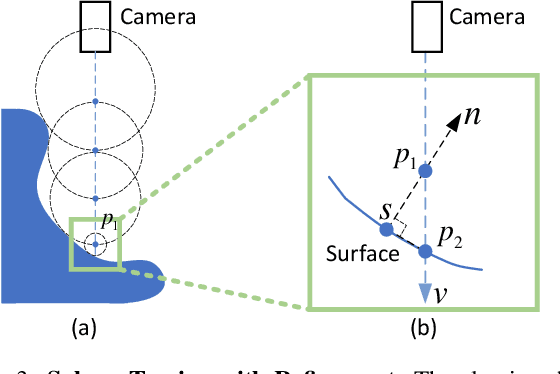DIP: Differentiable Interreflection-aware Physics-based Inverse Rendering
Paper and Code
Dec 09, 2022



We present a physics-based inverse rendering method that learns the illumination, geometry, and materials of a scene from posed multi-view RGB images. To model the illumination of a scene, existing inverse rendering works either completely ignore the indirect illumination or model it by coarse approximations, leading to sub-optimal illumination, geometry, and material prediction of the scene. In this work, we propose a physics-based illumination model that explicitly traces the incoming indirect lights at each surface point based on interreflection, followed by estimating each identified indirect light through an efficient neural network. Furthermore, we utilize the Leibniz's integral rule to resolve non-differentiability in the proposed illumination model caused by one type of environment light -- the tangent lights. As a result, the proposed interreflection-aware illumination model can be learned end-to-end together with geometry and materials estimation. As a side product, our physics-based inverse rendering model also facilitates flexible and realistic material editing as well as relighting. Extensive experiments on both synthetic and real-world datasets demonstrate that the proposed method performs favorably against existing inverse rendering methods on novel view synthesis and inverse rendering.
 Add to Chrome
Add to Chrome Add to Firefox
Add to Firefox Add to Edge
Add to Edge